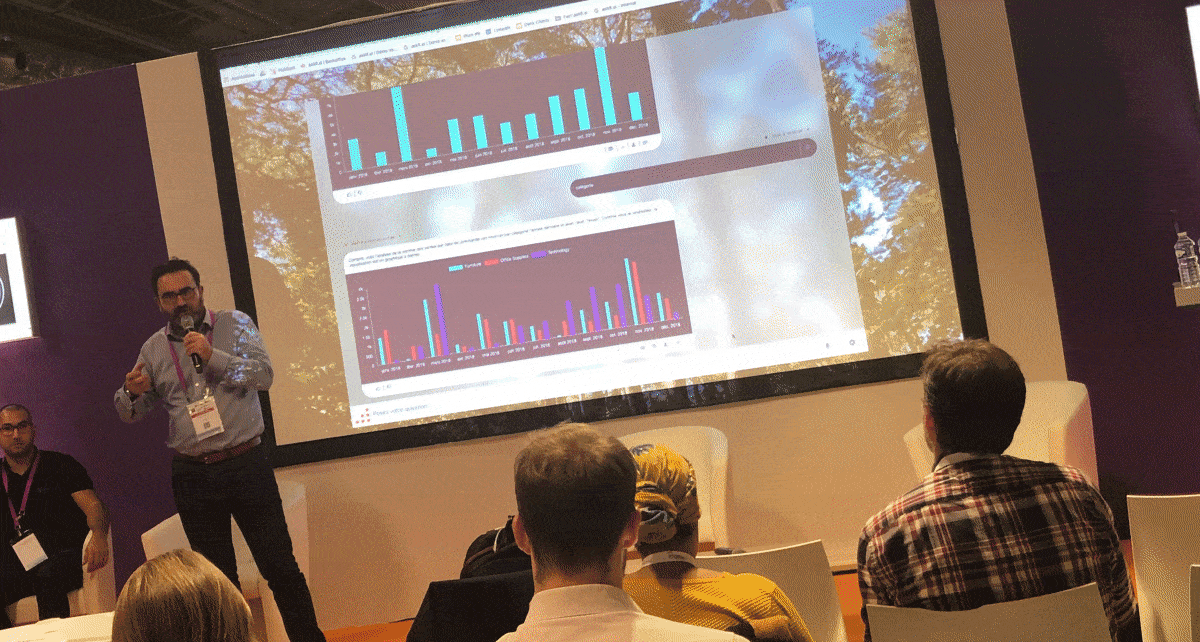For the past three years, the Purchasing Solutions Exhibition has been an opportunity to publish a survey conducted among approximately 350 buyers on their expectations in terms of purchasing software. Philippe Grange, director of the "Revelations UX Purchasing 2019" study conducted with Décision Achats, in partnership with the CNA, PWC and Media Dell'Arte, compared some software editors with the survey results.
Procurement SOFTWARES: A GROWING MARKET, WITH RISING EXPECTATIONS.
The market for procurement management softwares is estimated at more than $20 billion. It is rapidly growing and has emerged as one of the most dynamic sectors of the SaaS software market over the past 5 years. Mastering these complex software solutions requires a strong skill set for buyers, despite the rise of user-friendly interfaces in the SaaS revolution. Does the sector's growth and the editors' roadmap meet expectations? 65% of buyers who responded to the survey belong to companies of more than 2,000 employees, most of whom work in a purchasing department. Only 5% of buyers are part of a business department.
TOOLS INCREASINGLY ESSENTIAL...
Patrick CONQUET, VP Product Management emphasises that the survey figures are below IVALUA's adoption rate: 66% of users log in daily, and 30% once a month (IVALUA has the highest retention rate among e-procurement solutions).
It is therefore reassuring to see that there is a good overall adoption rate of purchasing softwares!
Some features are still missing.
On-the-ground reality is quite different. Users es utilisateurs peinent à accéder aux tableaux de bord, souvent pré-configurés et qui ne contiennent pas le niveau de détail requis pour répondre à des questions précises sur le vif.
Half of all buyers are satisfied with their tool, but 21% find it obsolete or not optimised enough!
Overall, the e-purchasing tool is considered secure with easily shared data, but the "digital" dimension is clearly considered as lagging behind, such as: the lack of integration with other tools, lack of multi-device compatibility and lack of automation linked to recent advances in AI… Anne TESSIER, from Synertrade, confirms and approves of the users' demand for flexibility.
However, be careful "to distinguish between a "simple" access to a webapp thanks to 4G, and a real mobile app development as we have done for our suppliers”.
A product’s ease of use remains essential to become widely adopted.
End-users hardly involved by software companies…
To the question "Have you been in direct contact with the software company in order to adapt the tool to your personal needs? ", the answer "not at all" is the most predominant.
The majority also indicates that they were not involved in the choice of their solution beforehand. However, they consider themselves to be fully informed about the benefits of the solution they are using. This difference can be explained. The buyers interviewed are the end users of the software, but not necessarily the customers and direct contacts of the software editors.
It is difficult to get all stakeholders involved, especially in large organisations, though this is the case for the majority of buyers interviewed for this study. Patrick DE COUCY, Managing Director at JAGGAER believes that it is unrealistic to respond to pain points individually. The real power of an e-purchasing solution is to cover as wide a range of needs as possible, avoiding elements the could cause the system to break down.
... But eager for new.
Yet, buyers have a very clear view of what’s to be done! When asked about what their priority investments would be if they were decision-makers, the buyers chose (in order and out of 10 proposals):
adding new features for improvement
investing in RPA and process automation solutions
training and modernising the tools of the purchasing function
drastic change of software editor / suite
support, recommendation and AI input.
Buyers want to broaden their scope, and are just waiting to be better informed about the possibilities offered by the latest RPA and AI technologies. But above all, AI is seen as an essential evolution for the 2nd year in a row (see UX Purchasing 2018).
About 15% of buyers require direct support: what about the virtual assistants mentioned in 2018?
This year, not a single word has been said about it… However, number of innovations were present at the fair such as askR.ai, the purchaser data assistant.













